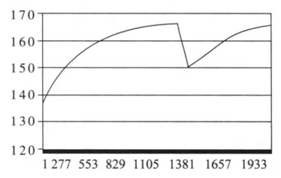题目内容
Personal finance is an increasingly complex world. There are more ways to invest money,more ways to save it,and more ways to lose it. Yet many people are more strangers to this world than they might like to admit.
Starting young to teach financial literacy.
In the United States,there are growing calls to do more to help young people learn skills in financial literacy. Some efforts begin in high school. But more and more information is available on the Internet,not only for young people but also for adults. The goal is to teach about budgeting,saving,investing and using money.
The United States Financial Literacy and Education Commission was established in two thousand three. This government group supervises financial education efforts through nineteen federal agencies.
Information on financial literacy and education can be found at its Web site. The address is My Money,gov. It includes links to agencies that deal with banking,buying a home,investing and other areas.
The National Council on Economic Education has found that seventeen states now require high school students to take a class in economics. This number has grown from thirteen in nineteen ninetyeight.
As of three years ago,half of all states required students to take a class in personal finance. Yet that number has fallen from twentyfive to twentytwo.
The National Council on Economic Education sells textbooks for grades four through twelve. It also offers free materials for teachers. The information is available at ncee.net.
Teachers say parents also need to play a larger part in educating their children about money. A recent study found that seventy percent of college students said they received financial advice mainly from their parents.
Investment companies also offer information. Charles Schwab,for example,has a Web site to help parents teach their kids about money and investing. The address is SchwabMoneyWise. com.
One of the first tastes of financial independence that many young people get is through summer jobs. Junior Achievement is an organization that teaches young people about finance and business. It says almost threefourths of young people questioned said they planned to have a summer job.
( ) 1. What's the goal of teaching young people financial literacy?
A. To teach them budgeting.
B. To teach them saving.
C. To teach them investing and using money.
D. All of the above.
( ) 2. Which web site or organization can help parents teach their kids about money and investing?
A. My Money.gov B. ncee.net
C. SchwabMoneyWise.com D. Junior Achievement
( ) 3. Which of the following is NOT true?
A. The US Financial Literacy and Education Commission was set up in 2003.
B. 13 states in the US required high school students to take a class in economics in 1998.
C. 3 years ago,half of all states in the US required students to take a class in personal finance.
D. Through summer jobs,young people can try to become independent in finance.
( ) 4. What's the best title of the passage?
A. Information on Financial Literacy and Education
B. How to Get Financial Independence
C. Starting Young to Teach Financial Literacy
D. The Way of Earning and Saving Money
1. D根据文章第2段The goal is to teach about budgeting,saving,investing and using money, 可知答案为D.
2. C根据文章倒数第2段Charles Schwab,for example,has a Web site to help parents teach their kids about money and investing. The address is SchwabMoneyWise.com可知答案为C.
3. B根据文章第6段B项应为17 states而不是13 states,其余几项都是对的。
4. C其余几项作为标题都比较片面,只能概括部分段落的意思,只有C项比较全面地概括了本文的意思。

 阅读快车系列答案
阅读快车系列答案
